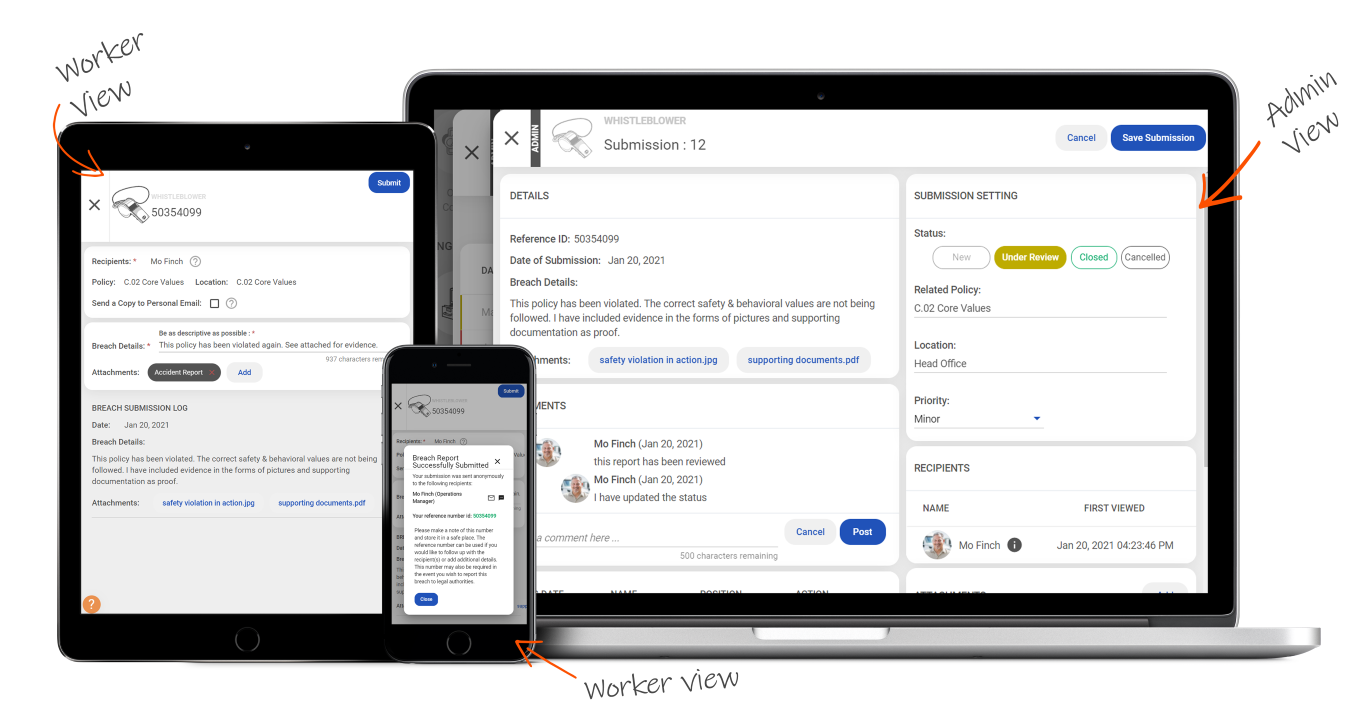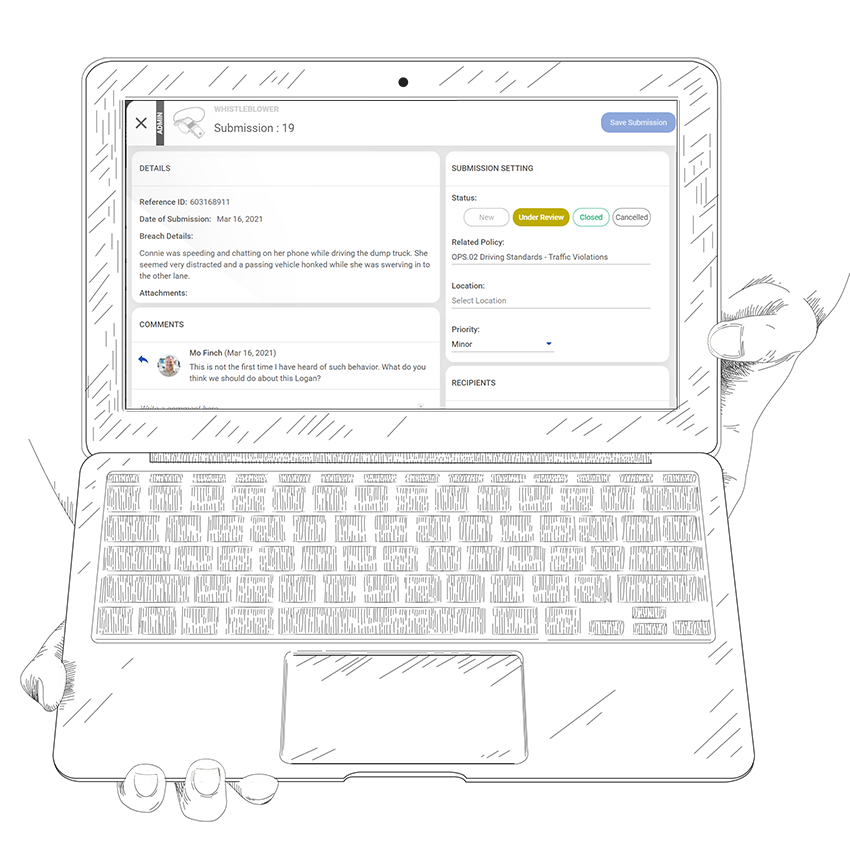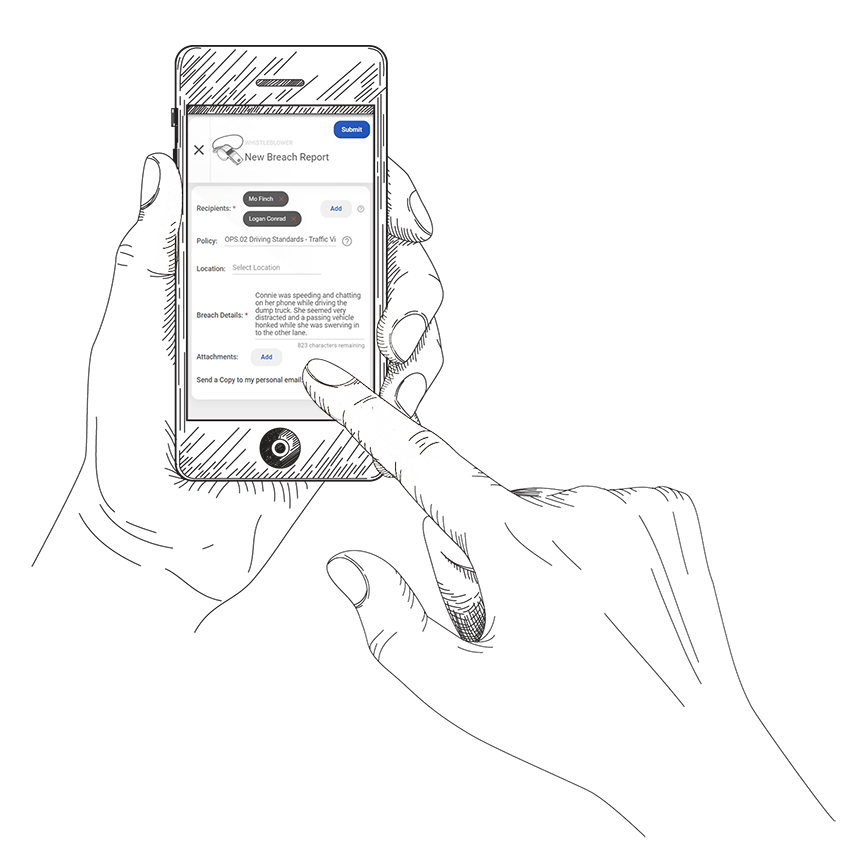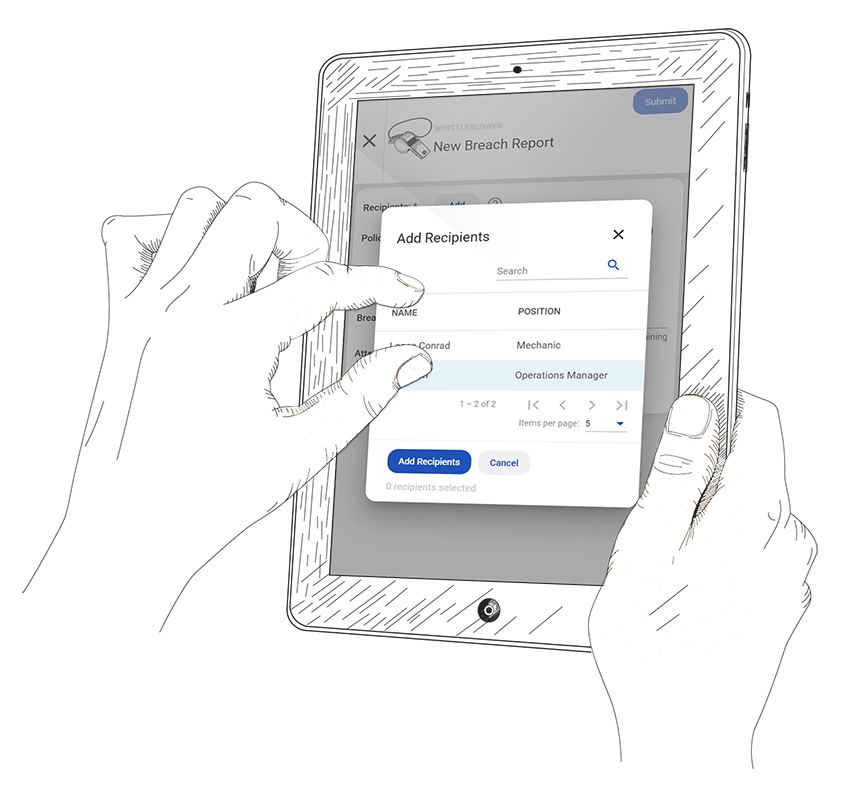It’s an inside job.
A whistleblower is a person who exposes information about wrongdoing within a company or organization. Preferably, employees report the issue early, so that it can be dealt with swiftly and make it less likely to occur again. Unfortunately, when an issue is left unaddressed, it can become a greater problem, and can end up being reported to an external body. This can create negative press about the company, potential legal action, lawsuits, and more. A robust whistleblowing program can help reduce the likelihood of these occurrences.
Importance of having a ‘speak up’ culture.
Ineffective responses to workplace wrongdoing can lead to a lack of confidence and a general unhappiness with leadership and management.
Our whistleblower component is completely anonymous; even we can’t see who sent it! This helps prevent retaliation and workplace controversy which can be a major deterrent in reporting. It also helps set the tone that unethical activities or wrongdoing will not be tolerated, and that an organization is committed to taking action.
Ultimately, this is just one step towards having a “speak up” culture at an organization. Issues will have to be addressed accordingly by administration and management for the tool to be effective, but the good news is that it’s a pretty darn big step!
Turn it on, then hope it never gets used…
- Select a list of Possible Recipients. It must be small enough that it is not overwhelming to the worker (we recommend one person, per department), but large enough to avoid conflicts of interest.
- Workers submit whistleblower reports through the worker dashboard. They choose recipient(s) from the list, attach a policy they believe was breached, a location, details about the events, attach files, as well as send a copy to their personal email. Once submitted, a worker can use their uniquely generated reference code to add additional details.
- When a recipient receives a report, they can see the details submitted by the worker, as well as: choose a priority, change the status, attach a related policy or location, attach additional files, or make comments. All details and comments are only viewable by recipients.
- Administrators (who aren’t assigned to a report) are only able to see a restricted amount of information about the submission. They can track the status and priority, related policy, location, and recipients, but all other information is restricted to the report itself.
Overview
Promote Speak-up Culture
Allow workers to submit policy breaches or wrongdoings within the organization. Breach reports can be linked to a policy to allow insight on which policies have been breached over time.
Full Privacy & Anonymity
Workers can report a breach with full anonymity. All records are fully encrypted in the database – even our developers can’t peek at them.
Assigned Recipients
Select the members of your organization to be possible recipients of the Whistleblower reports. Workers can choose from this list when reporting.
Notifications
Recipients are notified via SMS and/or Email that a new breach report has been submitted.
Detailed Submission Management
Recipients can follow-up on the report with commenting, document upload, detailed log, and status changes. Recipients are the only ones who can view the details.
Reference Number
Workers are provided a reference number upon submission. This number can be used for future submissions if the worker has additional comments or repeated occurrences to report.
Still have questions?
Let our knowledgeable sales team give you a full product tour and answer any specific questions you may have.



